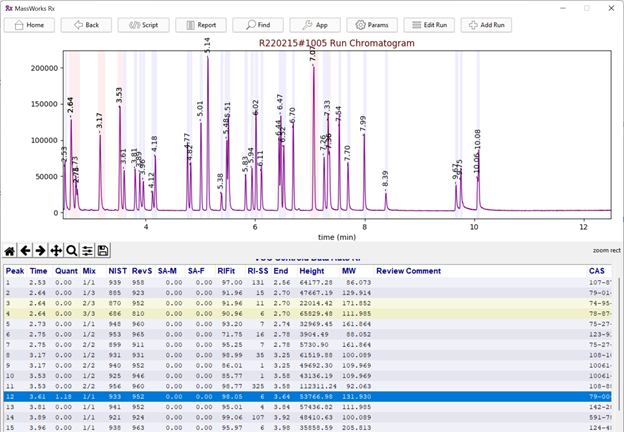Semi-Quant – Simple but Powerful
True and accurate quantitative analysis using GC/MS is a complex and difficult process. Due to differences in the ionization efficiencies, highly non-linear calibration curves and instrumental artifacts such as injection efficiency. However, it is sometimes useful to estimate concentrations of non-target materials by comparing relative areas of peaks in a run. Starting with GC/ID 3.0 a simple but powerful Semi-Quant capability is supported.
We designate the quant peaks as the Target peaks, and the Reference peaks. The Semi-Quant math is quite simple and is expressed as Concentration= Target Area * response factor/Reference Area. The response factor is a user provided “guestimate” of the concentration relationship between the Target and Reference peaks. For example, if a Reference compound has a known concentration of 10 ppm, and you want to estimate the Target peak directly to this concentration, you simple set the response factor to 10. Then, if the area or the Target is half of the Reference, a value of 5 is reported. Likewise, if you estimate the the response factor of the Target is half that of the reference, and the concentration of the reference is 10 ppm, the response factor is simple 10*0.5 which equals 5.
But the real power of Semi-Quant is the ability to specify Target and Reference peaks not just by Retention Time (RT), but by Retention Index (RI). Using RT is problematic as it can change over time and/or chromatographic conditions and methods, forcing you to constantly update the RT for the quant peaks. By using RT, which is calculated for all peaks in GC/ID, location of the quant peaks is independent of the chromatographic conditions.
Semi-Quant doesn’t stop there, however. You can easily use quant peaks that are very close because you can also specify the quant peaks by CAS Number or the NIST Accession Number from the NIST library, guaranteeing your method is robust and will always be using the correct peaks as identified by GC/ID. Finally, you can even us quant peaks that are coeluting with other peaks, thanks to GC/IDs powerful deconvolution which accurately estimates the area of each compound in a coeluting peak!

